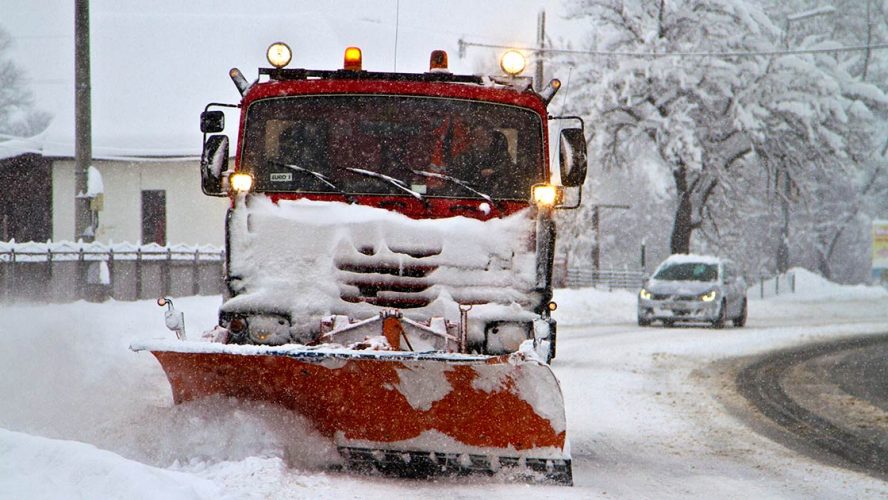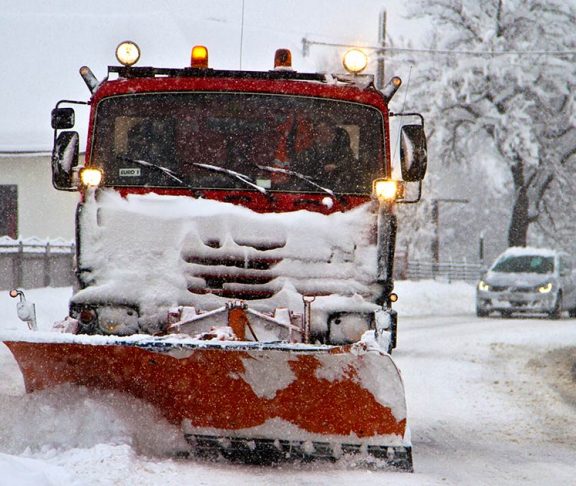Winter driving is tricky for everyone, but imagine you’re behind the wheel of a 70,000-pound snow plow trying to navigate through the snow and ice while spreading the correct amount of salt or de-icer, plowing the roads, and being mindful of obstructions — all at once.
Doesn’t sound easy, does it? Municipal snow maintenance crews are the road warriors for winter drivers. They clear the roads to make sure they’re safe not only for drivers getting to their destinations, but for our first responders to get to their calls on time, allowing ambulances to transport patients in a timely manner on safe streets.
Winter road maintenance crews such as snow plow operators need plenty of space on the road from other drivers and it’s best to remain a safe distance back to let them do their job. At no time is it safe to pass a plow.
It’s important to note when a winter storm is expected. All municipalities have a plan when it comes to road clearing:
- First, hills and bridges are treated in advance
of a storm to make them easier to plow.
- As soon as snow begins, salt trucks head out
and treat expressways and main roads first followed by smaller routes.
- Plowing begins in a similar order. With large snowfalls, plowing usually begins once the storm has ended.
There are some safety tips to keep in mind when driving during maintenance operations:
- Plows can’t see you and you can’t see the road
ahead.
- Plows are extra wide and throw snow and spray,
making it difficult to see if the road ahead is clear for passing.
- The safest place is well behind the plow.
- Wait for plows to pull over before passing. But
don’t accelerate too quickly — the road ahead is unplowed and could be slick or
snowy.
- Avoid parking in the street. Plows can’t clear roads that are blocked by parked cars.
If you’re a commuter you need to have your own plan, which should include leaving earlier and planning a route. Here’s what else you can do:
- During a storm, posted speed limits are usually
too fast. Drive according to weather conditions, not the speed limit. Conditions
can also be unpredictable and change rapidly.
- Avoid sudden moves, starts, or stops. Start
slowly on slick or snowy roads and brake gradually, giving yourself plenty of
space. Steer gently into turns to maintain control.
- Be visible. Use your low-beam headlights when
it is snowing. They’re brighter than daytime running lights and will turn on
your taillights.
- When conditions are icy, remember: “Be nice
driving on ice.” Stopping distance on ice is double that of a dry road.
- Leave extra space when driving in icy
conditions.
- Approach intersections slowly when they are
covered with ice or snow.
- Use extra caution on bridges and ramps. Ice can
form without warning, even if roadways are dry.
- Watch out for black ice, a thin, nearly invisible coat of ice that can make the road look like shiny new asphalt. Pavement will look grey or white in the winter.
Rachel Swiednicki is Manager of Marketing and Communications for the Ontario Good Roads Association.


